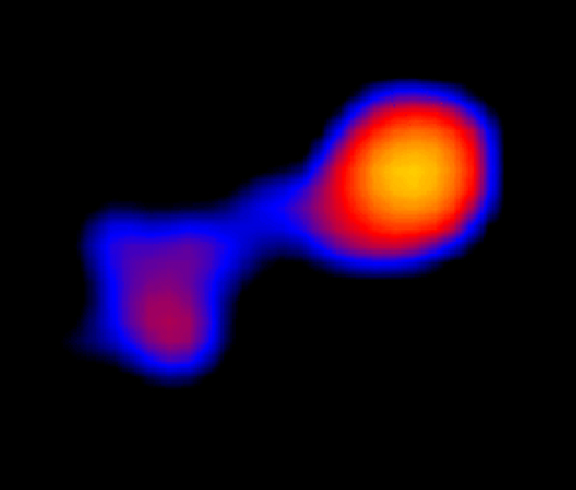
Mira: The Wonderful Star
Credit: X-ray Image: M. Karovska (Harvard-Smithsonian CfA) et al., CXC / NASA
Illustration: M.Weiss(CXC)
To seventeenth century astronomers, Omicron Ceti or Mira was known as a wonderful star – a star whose brightness could change dramatically in the course of about 11 months. Modern astronomers now recognize an entire class of long period Mira-type variables as cool, pulsating, red giant stars, 700 or so times the diameter of the Sun. Only 420 light-years away, red giant Mira (Mira A, right) itself co-orbits with a companion star, a small white dwarf (Mira B). Mira B is surrounded by a disk of material drawn from the pulsating giant and in such a double star system, the white dwarf star’s hot accretion disk is expected to produce some x-rays. But this sharp, false-color image from the Chandra Observatory also captures the cool giant star strongly flaring at x-ray energies, clearly separated from the x-ray emission of its companion’s accretion disk.
A collection of some of the most interesting stars in the heavens. Some are Giants, some are Dwarfs, some are Variable stars, and some are Binary Stars, and some are regions of stars. Some we re-use elsewhere, but they are all intrinsically interesting in our opinion. Remember that individual stars are not that photogenic. You really have to get your eye-ball on these beauties to fully appreciate them. Almost every star has a unique and interesting story to tell. Click here for spectral information.